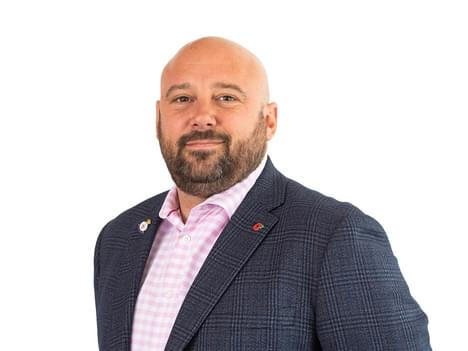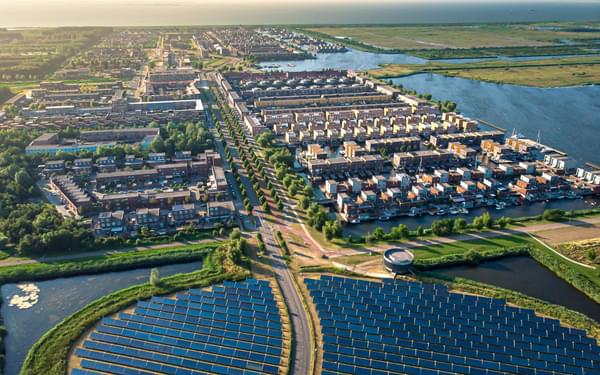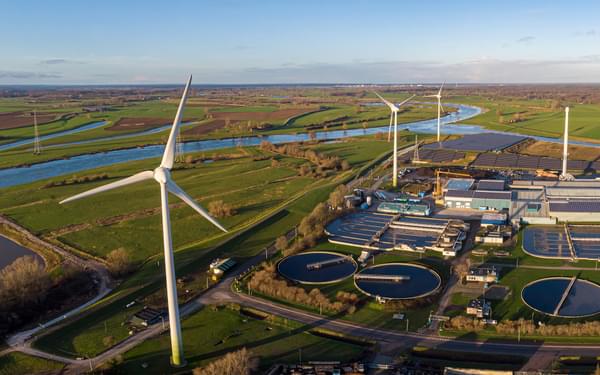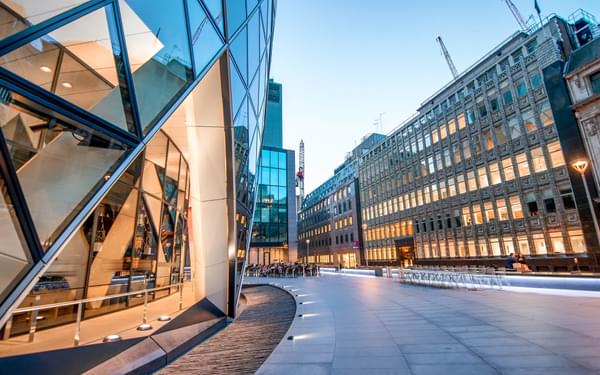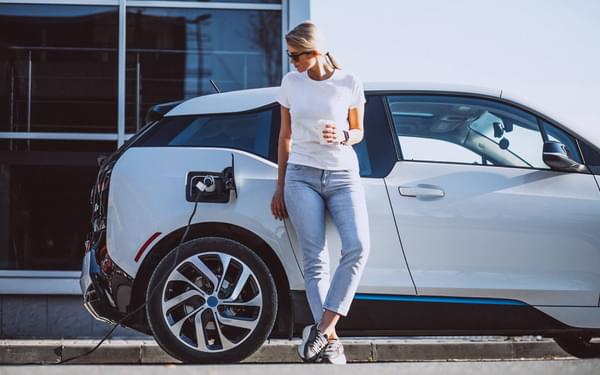Decarbonising heating and cooling — Our climate depends on it

“ The challenge of how we generate heat and cool our buildings is central to meeting our day-to-day needs without compromising the future of the world around us. Cutting energy use delivers fast results, but when combined with electrification and smart management, it becomes a game-changer for our energy future. ”
Did you know that your morning shower could be contributing more to climate change than your daily commute?
Shocking, but it's true – heating our homes and buildings accounts for over 50% of European energy consumption. Decarbonising this sector isn't just rhetoric; it's the key to unlocking a sustainable future. Let's explore how we can embrace a climate-friendly way to stay warm.
To meet the EU’s climate change mitigation targets for 2030 and beyond on our energy transition journey, national decarbonisation strategies for heating and cooling must phase out fossil fuels as soon as possible.
We’ve been too slow and too focused on specific sources when it comes to harnessing energy. In our opinion, we’ll miss our net zero targets if we don’t embrace existing sustainable options for decarbonising heating and cooling in buildings and industry.
What are renewable heat sources?
So, what are the most feasible renewable heat options for industrial and district heating use?
Truthfully, there’s no one-size-fits-all solution. But it’s clear that a holistic, tailored strategy and using the right technology for the right application is key to the business case.
Solar energy, geothermal heating, biomass and hydropower all offer proven sustainable alternatives to traditional fossil fuel which can heat our buildings and homes.

Policy measures and regulatory drivers for heating and cooling
Heat networks are mooted to form an important part of the governments’ plans across the UK, to reduce carbon and cut heating bills for customers.
The Heat Networks (Scotland) Act passed unanimously in March 2021. The Energy Act 2023 has introduced powers for the Secretary of State to introduce heat network zoning in England where heat networks are expected to be the lowest cost solution for decarbonising heat. Phasing in of this new regulation is expected to start in 2025, with a new market framework intended to be fully operational by the following year.
New legislation is something the industry has been calling out for, and with good reason. Accounting for around 50% of the total European final energy consumption, decarbonising heating and cooling is central to solving the net zero puzzle.
District heating networks have the power to integrate renewable and waste heat on a larger and more centralised scale.
The advantage of district heating and cooling networks
District energy offers the promise of a simple solution for the supply of low carbon heat and cooling to homes, businesses and public buildings.
Cities and larger towns have enormous amounts of unused heat. With district heating, it’s all about taking energy released from a range of energy sources and connecting to a community of energy consumers through a system of insulated pipes.
Take, for example, energy intensive factories, energy from waste plants, large datacentres, the ground, and even ambient water sources like rivers and sewers. The opportunity is huge. Countries like Sweden, in particular, have been quick to capitalise.
In a world increasingly looking at ways to lever a circular economy, these networks are a platform to re-use local sources of low carbon heat which would otherwise go to waste. District heating solutions benefit everyone: from the local governments keeping communities thriving, happy and healthy, to the place-makers providing desirable homes fit for the future, and ultimately right down to the people enjoying warm homes, without the eye-watering energy bill attached.

Making district heating work for all
Ensuring a just transition, it’s important that the potential benefits of localised heat generation are realised in practice.
We know big solutions to cut carbon emissions, like renewable energy, electrification, and using clean hydrogen for hard-to-abate industries, all cost money upfront. But there are schemes out there which encourage the uptake of district heating, aligning with the specific ambitions of projects and local policy, while ensuring standards are met.
In Scotland, for example, the District Heating Loan Fund, funded by the Scottish Government, supported good quality schemes that reduced bills, reduced emissions and created jobs. Meanwhile the Public Sector Decarbonisation Scheme has awarded over £2bn in grants since 2020, and we’ve had a lot of success supporting organisations with their funding applications.
Why microgrids are the way forward
The National Grid provides reliable power – well, most of the time. But in the event of natural disasters or security breaches, this would threaten the grid, and the ensuing blackouts can be catastrophic and costly.
In the UK, we have a capacity issue. Housing projects are being delayed for years because of a lack of grid infrastructure, and this translates into schemes for thousands of homes being put on hold. New projects face delays of up to four years in some parts of the UK, unless they have been really smart with their power procurement strategy, because of a lengthening queue of developers waiting to be connected. All of this is especially the case in the face of increased electrification for heating and the phase out of gas.
All the energy being put into building new, clean energy generating infrastructure in the shape of onshore and offshore windfarms, solar and hydrogen schemes risks being undone, as they face even longer waits after a deluge of new connection requests.
That’s why we need to build resilient, flexible power systems called microgrids. Operating either as part of the traditional grid or independently (or both), microgrids are revolutionising the way we manage our energy resources. They’ve been successfully deployed elsewhere, notably in Asia Pacific and North America.
The University of California has what’s been described as the ‘world’s most advanced’ microgrid on its San Diego campus. It powers a 1,200-acre campus with 450 buildings and supports around 45,000 students and teaching staff. It’s claimed that the university generates about 85% of its own energy, at about half the price that utility power would cost, adding up to millions of dollars in savings each year.
The opportunity is clear. By generating your own energy — and using or storing it — onsite, you can reduce the demand required from the grid, store any surplus, and make the most of not needing such a large grid connection.

Five-step approach to delivering your district heating project
1. Appraise your heat network and renewable sources opportunity
By integrating sustainability principles with geo-environmental and hydrogeological expertise, we ensure district heating schemes are built on a solid foundation, minimising environmental impact throughout the project lifecycle. This paves the way for a more sustainable and resilient heating solution for developments, at a campus level, or across small towns and cities.
2. Data gathering and scenario development
Sustainability is not a one-time consideration. We’ll ensure the scheme is designed for future expansion and integration with new heat sources like geothermal or waste heat recovery. Additionally, a lifecycle assessment will evaluate the environmental impact of the scheme throughout its lifespan, from construction to operation and decommissioning. By combining strong sustainability principles with meticulous MEP design, we’ll lay the groundwork for a district heating scheme that delivers efficient, low-carbon heating for a development or entire urban area, paving the way for a more sustainable future.
3. Engage with key stakeholders and local residents
Too often, large-scale projects to improve the energy efficiency of our homes fall flat. There’s a recurring theme in each: a lack of public buy-in. The engineering principles of these decarbonisation projects may have been sound but they don't progress because engagement with the public, end users, and stakeholders in local authorities has been misdirected. We bring a theoretical and practical understanding of the behaviours and perspectives of these stakeholders, shaping the way the opportunity is presented.
4. Get ‘fund ready’
The range of grants and funding available to support decarbonisation is significant. It’s worth taking time to understand what’s out there to support your own journey and to reduce the cost of these capital works.
As a starting point, we’ve picked out a few:
- Public Sector Decarbonisation Scheme — Grants for public sector bodies to fund heat decarbonisation and energy efficiency measures.
- Heat Networks Delivery Unit — Grant funding and guidance for local authorities.
- Green Heat Network Fund — Grant funding for low and zero-carbon heat networks.
- Heat Network Efficiency Scheme — Funding to improve existing heat network performance.
- Scotland’s Heat Network Fund — Supporting the development and rollout of heat networks.
5. System design, planning and optimisation
MEP engineering is crucial for heat networks, a key tool for decarbonising heat. Our MEP, utility and renewable energy engineers can support with network design and substation connections, picking efficient heat sources, minimising heat loss, and integrating the network with buildings. We use modelling to optimise designs and ensure efficiency and provide recommendations for maintenance to ensure you keep the district heating network running smoothly.



